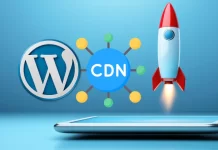Tips for Install WordPress at New domain
WordPress is a popular and powerful content management system (CMS) that allows users to easily create and manage websites. It is open-source software, meaning that it is free to use and can be modified to suit the needs of any website. WordPress is used by millions of websites, from small personal blogs to large corporations and everything in between.
One of the primary benefits of using WordPress is its ability to connect to a domain. A domain is the address that people use to access a website, such as www.example.com. Connecting WordPress to a domain allows users to create a custom web address for their site and make it easily accessible to visitors.
Installing WordPress on a new domain can seem daunting, but it’s actually a straightforward process. Here are the steps you’ll need to take:
- Purchase a domain name. This is the address people will use to access your website, such as www.example.com. You can purchase a domain from a registrar such as GoDaddy or Namecheap.
- Set up web hosting. This is where your website files will be stored. You can choose from a variety of hosting providers, such as InmotionHosting, Namecheap, or HostGator. Once you’ve chosen a provider, you’ll need to create an account and set up your hosting plan.
- Install WordPress. Most hosting providers offer a one-click install option for WordPress, which makes the process very easy. If your host doesn’t have this option, you can download the WordPress software from wordpress.org and upload it to your server via FTP.
- Configure your website. Once WordPress is installed, you’ll need to create a new admin account and customize your website’s settings. This includes things like the site title and tagline, permalinks, and more.
- Select a theme and customize your site. WordPress has thousands of free and paid themes to choose from. You can select the one you like and customize your site to match your brand.
- Create your pages and posts. You can create new pages and posts and add content to them. You can also add images and videos, and create categories and tags to organize your content.
- Install plugins. WordPress has thousands of plugins that can add additional functionality to your site, such as contact forms, SEO, and more.
- Launch your site. Once you’ve finished setting up your site, you can launch it by going to Settings > General and switching the site status from “Coming Soon” to “Live”.
- Keep your site updated. To keep your site running smoothly, be sure to keep WordPress, your theme, and any installed plugins up to date.
Following these steps will help you to have a WordPress site running on your new domain in no time. Once your domain is connected to your WordPress site, your site will be accessible via the domain name you’ve chosen, allowing visitors to easily find and access your site. Additionally, having your own domain name can give a professional look to your website and make it more memorable for visitors.
In short, WordPress is a versatile and user-friendly content management system that enables users to create and manage their own websites. Connecting a domain to WordPress allows users to establish a custom web address for their site, making it easily accessible to visitors. The process of connecting a domain to WordPress is straightforward and can be completed in a few simple steps.





